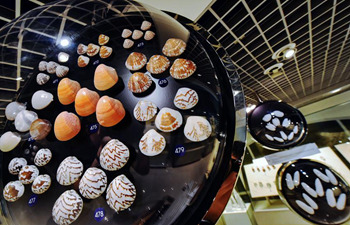SAN FRANCISCO, May 19 (Xinhua) -- A University of Washington (UW) study finds that during large climate swings, oxidants shift in a different direction than researchers had expected, which means they need to rethink what controls these chemicals in our air.
Tiny molecules drive the chemical cocktail of atmosphere. As plants, animals, volcanoes, wildfires and human activities spew particles into the atmosphere, some of these molecules act as cleanup crews that remove that pollution. The main molecules responsible for breaking down these emissions are called oxidants.
These oxygen-containing molecules, mainly ozone and hydrogen-based detergents, react with pollutants and reactive greenhouse gases, such as methane.
"Oxidants are very reactive, and they react with pollutants and greenhouse gases and clean up the atmosphere," said Becky Alexander, a UW associate professor of atmospheric sciences and corresponding author of the paper published in the journal Nature. "We wanted to see how the ability of the atmosphere to clean itself might change with climate."
First author Lei Geng, a former UW postdoctoral researcher now at Grenoble Alpes University, analyzed slices from a Greenland ice core in the UW's isotope chemistry lab. The 100,000-year core begins in a relatively warm period, covers a full ice age and ends in the present day, with several shorter temperature swings along the way.
The researchers used a new method to get a first-ever read on changes in atmospheric oxidants, which are not directly preserved in ice cores. They fed meltwater to bacteria that drank the liquid and then excreted a gas that can be measured by machines that track isotopic composition of gas. Looking at the weight of oxygen atoms from the meltwater let them see how many had come from the two main oxidants: ozone, which varies in the atmosphere over time, versus the detergent molecules, which are expected to stay fairly constant.
Atmospheric scientists had believed that ozone levels rise as the temperature increases. Ozone is produced with water vapor and emissions from plants, soil bacteria and other living things. All of these go up as the temperature warms.
However, instead of finding more ozone in the warmer climates, the authors found the proportion of ozone actually increased in colder climates. When the temperature changes were small, ozone did increase with temperature, but for big temperature swings that relationship flipped, with more ozone in the cold periods.
"We found that the sign of the change was the complete opposite of what we expected," Alexander said. "And that indicates that what we thought were the main drivers for the abundance of oxidants were not actually the main controls, and we had to come up with some other mechanisms."
One hypothesis proposed by the authors is a change in the circulation between the troposphere, the air above our heads, and the stratosphere, the higher-elevation layer close to where most airplanes fly. Air circulates between these two, moving up in the tropics and dropping back down at the poles. The stratosphere contains more ozone that is largely formed at those elevations in the tropics, so if the circulation quickens, then more ozone from the stratosphere would get carried down to the surface.
A second possible explanation, the researchers said, is a less-understood group of oxidants: halogens. Researchers suspect these molecules could react to affect the levels of other oxidants. "The largest source of halogens is from sea salt, and we know from ice cores that sea salt is much higher in colder climates," Alexander was quoted as saying in a news release. "Sea ice also changes with climate, of course."
The authors suspect that both mechanisms, namely the high-level circulation and chemical reactions with halogens, could affect oxidants during big swings in Earth's temperature.

















